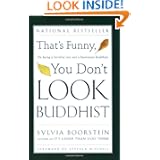Today was probably the worst day that I’ve had since I received my diagnosis. I was full of emotion and frequently broke down crying. The morning was especially trying, as I was desperately trying to get in to see Leslie Davenport, having told my boss that I wouldn’t make it in today. The best she could offer was 6:00 tomorrow evening, so I jumped on it.
The doubt factor was the strongest. I doubted myself. I doubted my recovery. I was consumed by the idea that if things didn’t change in my life, I would have more trouble as a person who had had cancer than a person that has cancer and knows it. I was extremely afraid to be hurt and abandoned. Now that I am well, are my friends still going to care about me? Will I be able to continue to create my dream? Will my heart remain open? Or, is it already out to lunch? What about the divine love I was feeling last week? What about the love my daughter expressed for me last Friday? How can all of this be simultaneously true in my experience.
Well, here I am, eating soup with a fork! You’ll have to read It’s Easier Than You Think by Sylvia Boorstein to get the full impact of what I’m doing! The book is about the Buddhist way to happiness, and I spent the afternoon reading the whole thing, in between fits of tears and meditation. One of the main ideas that struck me from the book was that, “Traditional Buddhist texts teach that the ability to sustain attention in the truth of the moment is the antidote for doubt.” Many of her stories also moved me to tears. One of the bells of mindfulness that happened during my meditation was as call from a member of Anna Halprin’s group who offered to give me a massage tomorrow after talk at Voices of Healing.
I guess I’m doing a little better now that I’m eating my soup with a fork and writing in Yellow Stream!







